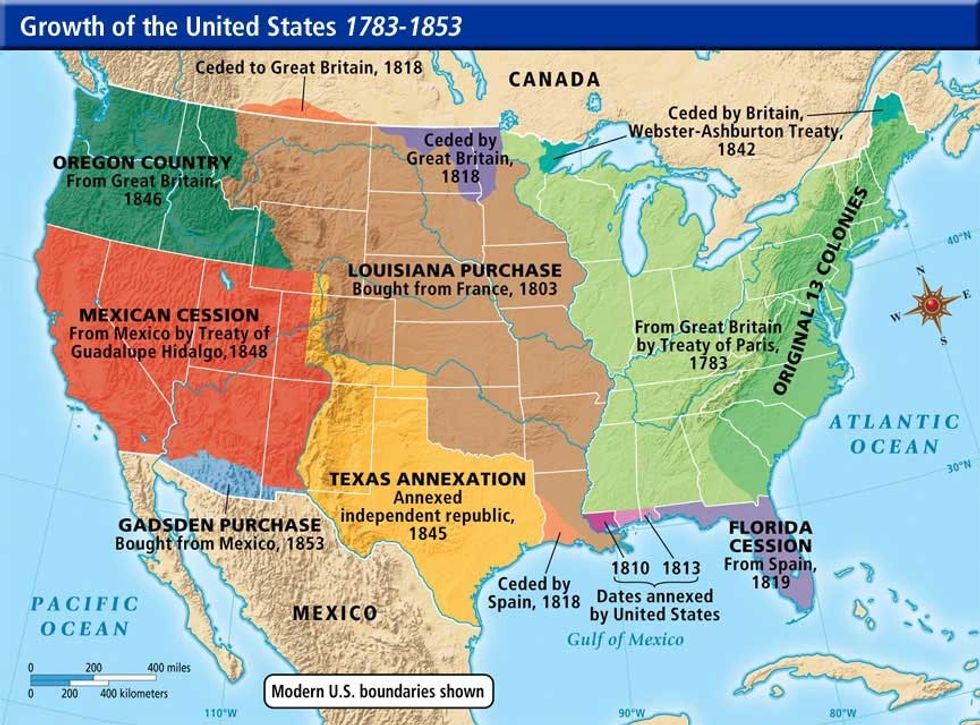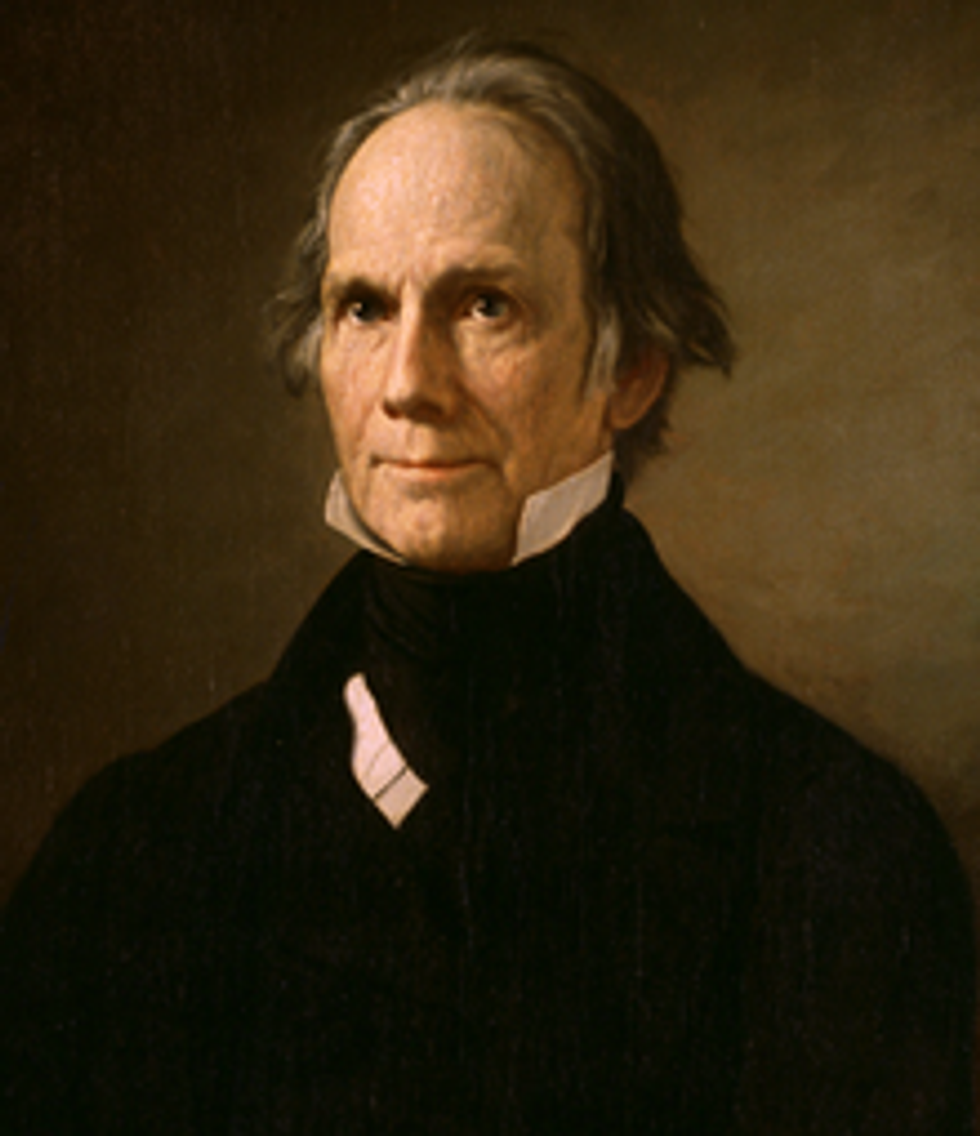For those who need to be reminded, the first part of this series on alternative causes of the Civil War discussed tariffs. The second part discussed northern aggression. In each part, it was not difficult to connect slavery with each of the causes, and the same can be said for the third topic of this series, westward expansion.Six Degrees of Southern Separation Part 1 Six Degrees of Southern Separation Part 2

When most people claim that westward expansion was a cause of the war, not slavery, they usually say that northerners and southerners had different ideas of how the new territories should be settled.
That statement is correct. In fact, the reason they had different ideas is that northerners wanted to prevent slavery from spreading to the territories, while southerners wanted to bring their slaves into the territories. So once again, westward expansion can be considered a cause of the Civil War but is closely related to slavery. Westward expansion created a rift between the North and the South because they disagreed over the future of slavery in the territories.

As early as 1784, Thomas Jefferson suggested in his “Report of a Plan of Government for the Western Territory,” that after 1800, slavery should be outlawed in the territories that would become Ohio, Indiana, Illinois, Wisconsin, and Michigan. His idea was superseded by the Northwest Ordinance in 1787, which essentially made the Ohio River the northern boundary for slavery’s extension (The Portable Thomas Jefferson, Merrill Peterson).
However, this plan was complicated by the Louisiana Purchase in 1803. Jefferson, now president, could have extended the prohibition of slavery in the Northwest Territory into the new Louisiana Territory, but instead made no decision. It wasn’t until 1820 that the issue would come to head. Missouri wanted to become a slave-state, but it was above the Ohio River boundary. Congress settled the issue with the Missouri Compromise.
Missouri would come into the Union as a slave-state and Maine, then a part of Massachusetts would come into the Union as a free-state. Also, from then on slavery would be prohibited above the 36° 30’ parallel. Why was territorial expansion such a contentious issue?

In the Constitution, as a way to increase the representation of southern states in the House of Representatives, it was stated that southern slaves counted as three-fifths of a person in representation. However, the population in the North quickly outpaced the South’s, even with the Three-Fifths Compromise.
Unable to maintain a southern majority in the House, southerners focused on the Senate. Every time a new state came into the Union, it disrupted the balance of free-states and slave-states. The Missouri Compromise alleviated this issue until 1844.
The 1844 presidential election was essentially a referendum on westward expansion. The Democratic candidate, James K. Polk, supported the annexation of Texas, which, according to the Missouri Compromise, would come into the Union as a slave-state. To garner some northern votes, he also championed the slogan 54° 40’ or fight, which challenged Great Britain on the boundary of the Oregon territory.
Henry Clay, architect of the Missouri Compromise and the Whig candidate, never took a strong stance on the annexation of Texas or expansion, but traditionally Whigs supported economic growth instead of territorial growth. In one of the closest elections in U.S. history, Polk narrowly beat Clay by less than 40,000 votes.

Once in office, Polk provoked the war with Mexico to gain more territory. Other than the northern portion of California, the territory attained during the Mexican-American War would permit slavery according to the Missouri Compromise. To prevent this, a Pennsylvania congressman, David Wilmot, issued a proviso, which stated that slavery should not be extended into the territories recently gained by the war with Mexico.
Disagreement over the Wilmot Proviso essentially paralyzed the Senate until 1850. The Compromise of 1850, which was drafted by Henry Clay, abolished the Missouri Compromise, brought California in as a free-state, and created a stricter Fugitive Slave Law. Although it was called a compromise, the Compromise of 1850 heavily favored southern interests.

Slavery in the west was further exacerbated with the Kanas-Nebraska Act in 1854. Authored by Stephen Douglas of Illinois the Kansas-Nebraska Act stated that the issue of slavery should be decided by popular sovereignty. This caused a small-scale Civil War in Kansas known as Bleeding Kansas.
By the time of the election of 1860, the largest issues facing the opposing parties was slavery and westward expansion. To be more precise, the issue of slavery in the western territories. Lincoln’s platform stated that slavery should be outlawed in the territories, therefore restricting slavery. Stephen Douglas, the Northern Democrat, ran on a platform for popular sovereignty.
John Breckinridge, the Southern Democrat, ran on a platform for slavery’s extension into the territories. John Bell, the Constitutional Union candidate, ran on a platform which ignored the slavery issue altogether. Lincoln ended up winning the election and southern states began to secede. In his first inaugural address, Lincoln reminded the southern states that he had no intention to mess with slavery in states where it already existed, but merely to prevent its extension. This was not enough to appease the southern states and the war would begin a month later.
Westward expansion is a major cause of the Civil War, but only because of differing opinions regarding slavery in the western territories.



















